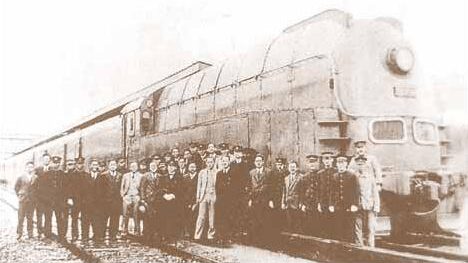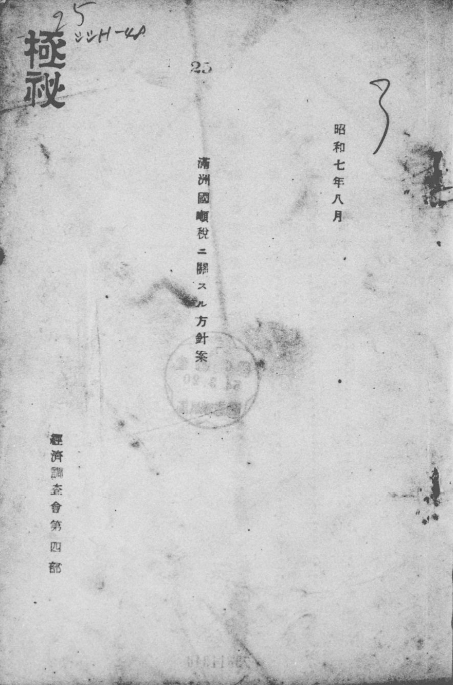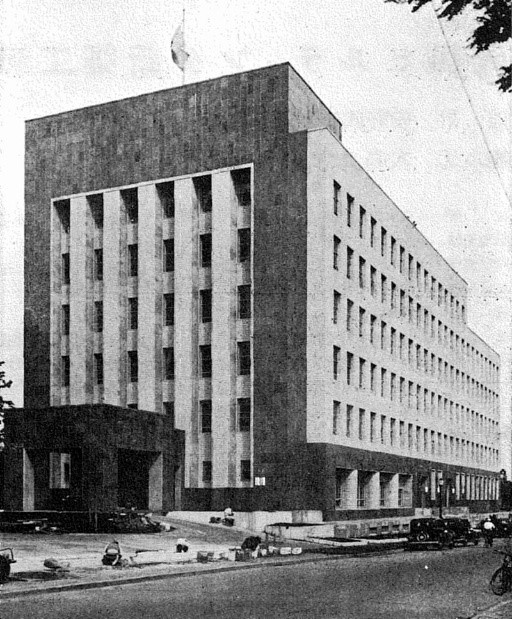The Road to the Best and Brightest Institute (Part 2): Learn from the Manchurian Railway Investigation Department

When the Manchurian Incident broke out in September 1931, the MRID was assigned a new role. The Kwantung Army occupied all of Manchuria around February 1932 and established ‘Manchukuo’ in March.
(Figure: Kwantung Army headquarters in Hsinking, Manchukuo)

(Source: Wikipedia)
Meanwhile, the Manchurian Railway actively supported the Kwantung Army by transporting troops by rail, providing security along the railway line and gathering information.
Furthermore, with the establishment of Manchukuo in 1932, Manchuria Railways was asked by the Kwantung Army to formulate economic policy for Manchukuo. In response to this asking, a new Economic Research Committee, a separate unit of MRID, was established.
Masayoshi Miyazaki was the one who organised it at the behest of the Kwantung Army. The MRID almost transferred its functions to the Economic Research Committee, with the result that the MRID, although formally an organ of the Manchurian Railway, in fact became an organ of the military under the leadership of the Commander-in-Chief of the Kwantung Army.
At its peak, the Economic Research Committee employed around 300 researchers and continued to publish reports at the rate of several per month. They formulated the foundations of Manchukuo’s economic policy from 1935.
In July 1937, the Ruho Bridge Incident broke out, plunging the country into the Sino-Japanese War. The MRID has launched a new project to analyse the course of this war.
In its conclusions from this project, called the ‘Comprehensive Study’, the MRID did not predict Japan’s victory, although it did not describe Japan’s defeat, but rather foresaw a bleak future for Japan. It could be said that this analysis by MRID spurred the Japanese military at the time into peace operations against China. MRID’s achievement in producing a cool-headed scenario for the future, despite being under the umbrella of an all-party regime, is to be commended.
(Figure: Report by the Economic Research Committee)

(Source: National Diet Library)
In December 1941, Japan launched a war against the US to break the Japan-China War, which had become a quagmire. The MRID has also added a new mission here: Research on the Southern Front. However, soon after the start of the investigation, the Allied counter-attack began and they did not achieve much in the way of concrete results.
In 1942, the MRID was decimated when it was suppressed by the Gendarmerie due to suspicions of communists within its ranks. Even under these circumstances, the Soviet investigation continued, gathering detailed information on the war between Germany and the Soviet Union and sending it to the Kwantung Army.
And the MRID also warned that since May 1945, the Soviet forces that had forced Germany to surrender had moved their main troops from the Western Front to the East via the Trans-Siberian Railway and were concentrating in the border region of Manchuria. Unfortunately, the Kwantung Army was no longer able to use this MRID information.
(Figure: Soviet gains in North East Asia, August 1945)

(Source: Wikipedia)
In August 1945, Manchukuo was attacked by Soviet forces and ceased to exist. The MRID also closed its research activities in the midst of this chaos.
After the war, many of the MIRD researchers who had repatriated to Japan resumed their research activities, many of them taking up teaching positions or working for research institutions.
Successor organisations created by researchers from the MRID include the following:
- DENTSU INC.
- Fukuoka Association of Corporate Executives
- Middle East Institute of Japan
- Institute of Developing Economies
MRID researchers continued to play an important role not only before and during the war, but also in the country’s post-war reconstruction and subsequent rapid growth.
(Figure: Manchuria Railway’s Tokyo branch office in Toranomon)

(Source: Wikipedia)
Finally, how can its strengths be summed up?
First, the fact that Marxists were recruited alongside right-wingers like Shumei Okawa. It was a ‘paradise of freedom’, especially for left-wing intellectuals.
It can be said that a narrative was constructed that MRID was the ‘best think tank’ in post-war Japan.
Second, the research at the MRID emphasised historical research and went beyond factor analysis to predict future scenarios.
There are three approaches to policy research: interdisciplinary, problem-oriented and future-oriented. Many of Japan’s think tanks and research institutes are problem-oriented, such as in factor analysis, but a future-oriented approach that incorporates a futuristic and long-term perspective is even more needed in an increasingly chaotic international society.
Thirdly, the MIRD also showed leadership in actually implementing the policies it formulated, including in cooperation with the Kwantung Army.
Although the result was a tragedy of war, the MIRD did not confine itself to theoretical theories, but also played a role in implementing the future scenario it had drawn up.
The MIRD had all the elements of information literacy required today: looking back at history, providing a future scenario, and taking a leadership role in bringing that scenario to reality.
This attitude of the MRID is also reflected in our institute, IISIA, which is working on these elements for “Pax Japonica”.
(reference)
*1 https://www.murc.jp/english/report/quarterly_journal/qj1102_02/
*2 https://dl.ndl.go.jp/pid/1088221/1/3
*3 http://www.cismor.jp/uploads-images/sites/3/2015/05/617667a09722574c04d7108677837c1d.pdf
Hiroyasu HARADA
Manager (Senior Analyst), Global Intelligence Group (GIG)



